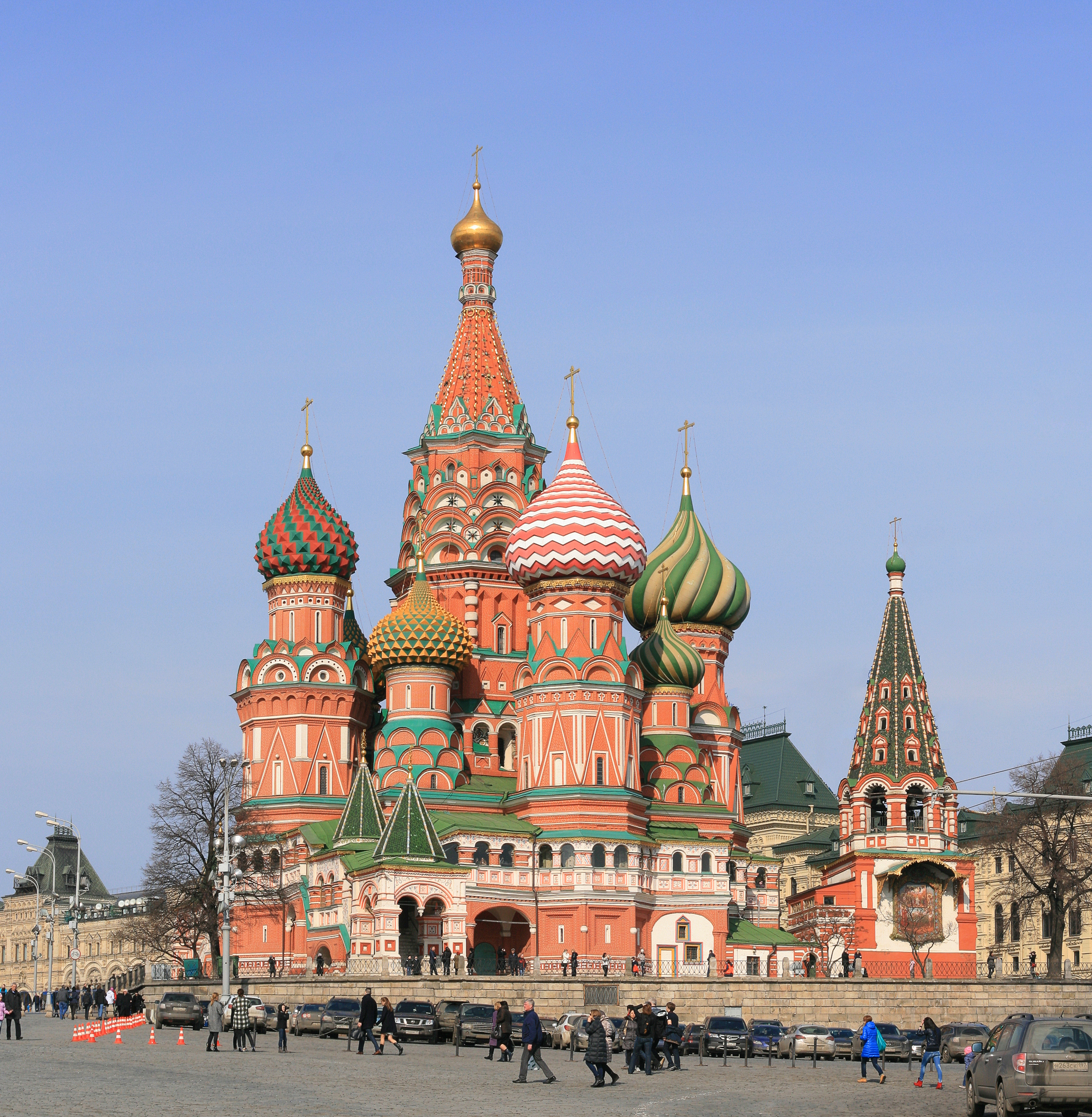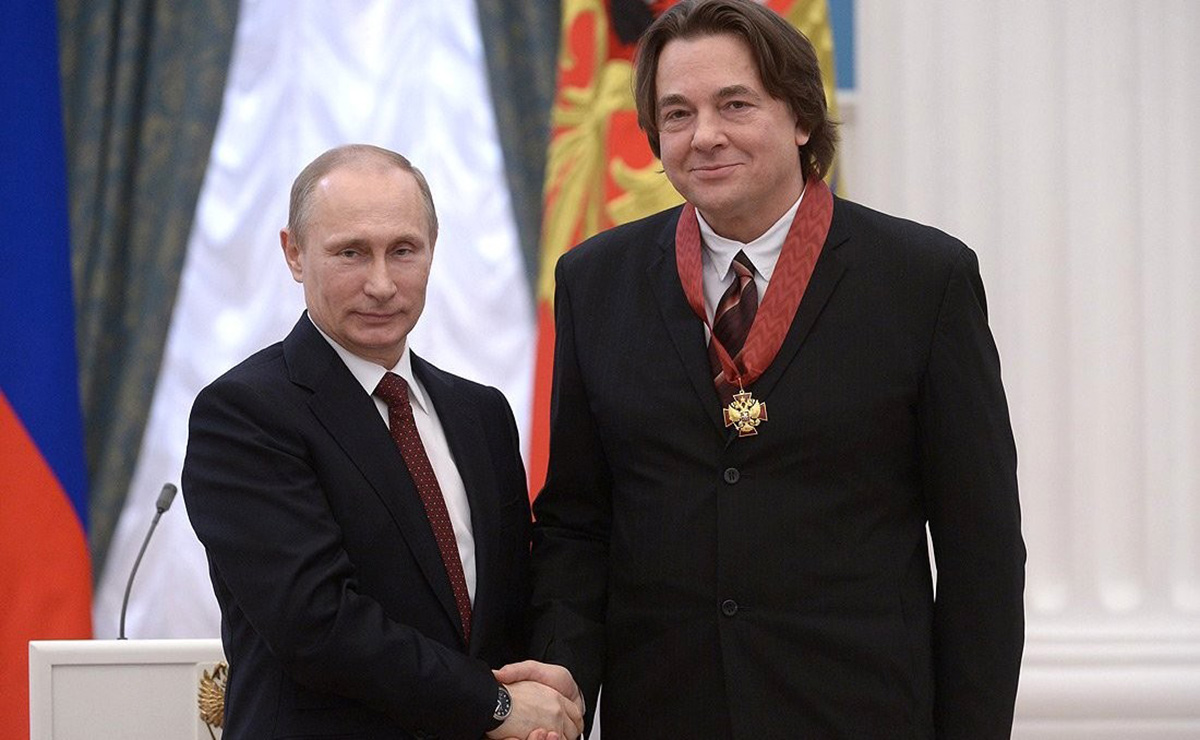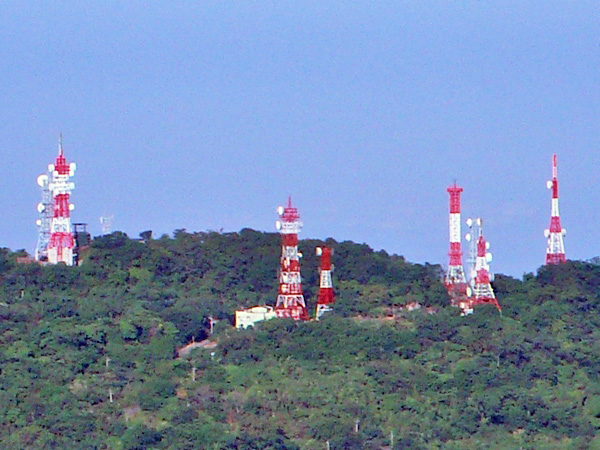|
Russia-1
Russia-1 () is a state-owned Russian television channel, first aired on 14 February 1956 as Programme Two in the Soviet Union. It was relaunched as RTR on 13 May 1991, and is known today as Russia-1. It is the flagship channel of the All-Russia State Television and Radio Broadcasting Company (VGTRK).Alexei Bessudnov, "Media Map" (183–189), ''Index on Censorship'', Volume 37, Number 1, 2008, p. 184. In 2008 Russia-1 had the second largest audience in Russian television. In a typical week, it was viewed by 75% of urban Russians, compared to 83% for the leading channel, Channel One. The two channels are similar in their politics, and they compete directly in entertainment. Russia-1 has many regional variations and broadcasts in many languages. History Soviet period Russia-1 started broadcasting as The Second Moscow Programme (Programme Two) in 1956. From the very start, it only hosted programs produced by the Ministry of Education of the Soviet Union, as well as children's progr ... [...More Info...] [...Related Items...] OR: [Wikipedia] [Google] [Baidu] [Amazon] |
RTR-Planeta
RTR-Planeta (''Rossiyskoe televidenie i radio - Planeta'', ) is the international TV Channel of VGTRK, a state-owned broadcaster in Russia. It is available worldwide via cable and satellite as Россия РТР (Russia RTR) for the CIS countries and the Asia-Pacific region, and as Planeta RTR for other countries, referred to on air as RTR. History On June 30, 2002, VGTRK executive Oleg Dobrodeev announced the creation of RTR-Planeta, aiming at Western Europe and the Middle East with plans to launch in North America by autumn. According to Dobrodeev, RTR-Planeta wasn't "a commercial project", meaning that there would be no commercial advertising "for the time being". The channel launched on July 1, 2002 using the Express-3A satellite. Programming included morning relays of Euronews, RTR's programming, including Vesti's editions, its TV series and movies, as well as some programming from Kultura. The channel was financed by the VGTRK's internal reserves and did not receive fund ... [...More Info...] [...Related Items...] OR: [Wikipedia] [Google] [Baidu] [Amazon] |
Russia-K (TV Channel)
Russia-K ( "Russia - Culture") is a Russian nationwide not-for-profit television channel that broadcasts shows regarding arts and culture. It belongs to the state-controlled VGTRK group. History The creation of ''Kultura'' channel was authorised on 25 August 1997 after the presidential Decree No. 919 was signed by Boris Yeltsin. Its creation was supported by Mstislav Rostropovich, Dmitry Likhachyov, Rolan Bykov and other public figures. Mikhail Shvydkoy became the first editor-in-chief of Kultura. The channel began broadcasting on 1 November 1997 at 10:00 AM. At the stage of launching, it was planned that it would be called "RTR-2" (while Russia-1 (TV channel), RTR was labeled as RTR-1). The corresponding logo was briefly used in a number of printed TV programs, while the stylized "K" letter was used as the logo from the beginning of broadcast. The channel was rebranded as ''Russia-Culture'' (''Rossiya-K'') on 1 January 2010 along with three other main channels of the VGTRK grou ... [...More Info...] [...Related Items...] OR: [Wikipedia] [Google] [Baidu] [Amazon] |
Programme Two
Programme Two (Russian: , ''Vtoraya programma TsT'') was one of the channels of Soviet Central Television between 1956 and 1991. Its programmes was mostly entertainment, cultural, news and sport programming. It was also known as the All-Union Program due to its national reach across the Soviet Union and the fact that even programs of all forms from the various Union republics were also broadcast here. It is now known as Russia-1. History Programme Two began services in 14 February 1956 for Moscow and surrounding regions.История советского телевидения: от первых опытов до «Останкино» // Ferra.ru, 29 September 2014 as «Вторая (московская) програ� ... [...More Info...] [...Related Items...] OR: [Wikipedia] [Google] [Baidu] [Amazon] |
All-Russia State Television And Radio Broadcasting Company
The Russian Television and Radio Broadcasting Company (RTR) or Russian Television and Radio Broadcasting Company, also known as Russia Television and Radio, is a national State media, state-owned broadcaster which operates many television and radio channels. The company was founded in 1990 and is based in Moscow. The broadcasting of nation-wide TV and radio channels is located in Moscow, and also via the regional transmitting centres of the Russian Television and Radio Broadcasting Network forming the terrestrial transmitting network. TV and radio channels from Moscow are delivered to the regions via satellite and terrestrial communication channels. Regional programmes are produced in regional production studios. In December 2019, the VGTRK media holding company reported that it broadcasts its programs in 54 Languages of Russia, languages spoken in Russia including from local studios, up from 53 languages in 2010. It includes even Critically endangered language, critically enda ... [...More Info...] [...Related Items...] OR: [Wikipedia] [Google] [Baidu] [Amazon] |
Soviet Central Television
The Central Television of the USSR (; abbreviated CT USSR, SCTV ">/nowiki>/nowiki>) was the state television broadcaster of the Soviet Union. Like much of the Soviet media, CT USSR regularly promoted the agendas of the Communist Party. Initially, the service was operated, together with the national radio service, by the Ministry of Culture. Later it was operated by the Gosteleradio committee, under the Communications Ministry and the Information and Press Ministry, and later a Council of Ministers-controlled network of television and radio broadcasting. First decades Radio was the dominant medium in the former Soviet Union, however, in the 1930s preparations for television were in full swing. On 1 October 1934, the first television sets were made available to the public. The next year, the first television broadcasts began. The Soviet Union television service began full-time experimental test broadcasts on 1 March 1938. Regular public programming began on 9 March 1938 – w ... [...More Info...] [...Related Items...] OR: [Wikipedia] [Google] [Baidu] [Amazon] |
Moscow
Moscow is the Capital city, capital and List of cities and towns in Russia by population, largest city of Russia, standing on the Moskva (river), Moskva River in Central Russia. It has a population estimated at over 13 million residents within the city limits, over 19.1 million residents in the urban area, and over 21.5 million residents in Moscow metropolitan area, its metropolitan area. The city covers an area of , while the urban area covers , and the metropolitan area covers over . Moscow is among the world's List of largest cities, largest cities, being the List of European cities by population within city limits, most populous city entirely in Europe, the largest List of urban areas in Europe, urban and List of metropolitan areas in Europe, metropolitan area in Europe, and the largest city by land area on the European continent. First documented in 1147, Moscow became the capital of the Grand Principality of Moscow, which led the unification of the Russian lan ... [...More Info...] [...Related Items...] OR: [Wikipedia] [Google] [Baidu] [Amazon] |
Channel One Russia
Channel One ( rus, Первый канал, r=Pervý kanal, p=ˈpʲervɨj kɐˈnal, t=First Channel) is a Russian Television in Russia, federal television channel. Its headquarters are located at Ostankino Technical Center near the Ostankino Tower in Moscow. The majority of its shares are owned or indirectly controlled by the state. It was created by decree of Russian president Boris Yeltsin to replace Ostankino Television Channel One, which in turn replaced Programme One in 1991. From April 1995 to September 2002, the channel was known as Public Russian Television (, ORT ). The main news programmes are ''Vremya'' and ''Novosti (TV program), Novosti''. Channel One's main competitors are the Russia-1 and NTV (Russia), NTV channels. The channel has 2,443 employees as of 2015. History When the Soviet Union was abolished, the Russian Federation took over most of its structures and institutions. One of the first acts of Boris Yeltsin's new government was to sign a Decree of the ... [...More Info...] [...Related Items...] OR: [Wikipedia] [Google] [Baidu] [Amazon] |
Digital Terrestrial Television
Digital terrestrial television (DTTV, DTT, or DTTB) is a technology for terrestrial television, in which television stations broadcast television content in a digital signal, digital format. Digital terrestrial television is a major technological advancement over analog television, and has largely replaced analog television broadcasting, which was previously in common use since the middle of the 20th century. Test broadcasts began in 1998, and the Digital television transition, changeover to digital television began in 2006 and is now complete in many countries. The advantages of digital terrestrial television are similar to those obtained by digitizing platforms such as cable TV, satellite, and telecommunications: more efficient use of radio spectrum bandwidth, the ability to broadcast more channels than analog, better quality images, and potentially lower operating costs for broadcasters. Different Country, countries have adopted different digital broadcasting standards. Some ... [...More Info...] [...Related Items...] OR: [Wikipedia] [Google] [Baidu] [Amazon] |
Russia-24
Russia-24 () is a state-owned Russian-language news channel from Russia. It covers major national and international events and focuses on domestic issues. It is owned by VGTRK. History The broadcast began July 1, 2006 in Russia, February 7, 2007 on the West Coast of the United States, May 19, 2008 in Serbia, and October 9, 2008 in Kyrgyzstan. VGTRK Crimea started broadcasting on March 10, 2014. The editor-in-chief of the channel is Evgeny Bekasov (since 2012). The channel ostensibly aims to give a broad and impartial outline of life in all of Russia’s regions from its European exclave of Kaliningrad to Vladivostok in the Far East. The channel was named ''Vesti'' until 1 January 2010, when the public-owned VGTRK rebranded its channels. Russia-24 was banned in Ukraine, Moldova, the United Kingdom, and the European Union as a result of the 2022 Russian invasion of Ukraine On 24 February 2022, , starting the largest and deadliest war in Europe since World War II, ... [...More Info...] [...Related Items...] OR: [Wikipedia] [Google] [Baidu] [Amazon] |
Good Night, Little Ones!
''Good Night, Little Ones!'' () is a long-running Russian-language children's television program. Continuously broadcast since 1964 (premiered during the Soviet era), it airs on the Carousel channel. The program's presenters have included Valentina Leontieva (in the 1960s and 1970s), Angelina Vovk, Tatyana Sudets and Tatyana Vedeneyeva (in the 1980s), Amayak Akopyan (in the 1996 and 2001). Current presenters () include Anna Mikhalkova (Nikita Mikhalkov's daughter), Oxana Fedorova, Nikolai Valuev and Mikhail Porechenkov. Format The format has remained relatively constant over the decades. The presenter (a recognisable news reader, actor, or public figure) is joined on-set by one or two puppet characters. The most regularly appearing puppets are ''Khryusha'' (a piglet - introduced on February 10, 1970), ''Stepashka'' (a hare, introduced in 1970), ''Philya'' (a dog, introduced in 1968), ''Karkusha'' (a crow, introduced in 1982) and ''Mishutka'' (a bear, introduced in 2002) ... [...More Info...] [...Related Items...] OR: [Wikipedia] [Google] [Baidu] [Amazon] |
Government Of Russia
The Russian Government () or fully titled the Government of the Russian Federation () is the highest federal executive governmental body of the Russian Federation. It is accountable to the president of the Russian Federation and controlled by the State Duma. The status and procedure of its activities are determined by chapter 6 of the Constitution of the Russian Federation and the provisions of the federal constitutional law "On the Government of the Russian Federation". The Government's terms of reference include the development and enforcement of the federal budget and the implementation of socially oriented government policies in various cultural areas of Russian society. Although the Government of the Russian Federation does not adopt laws, its responsibilities include issuing federal by-laws (resolutions) based on federal laws passed by the Federal Assembly. According to the 1991 amendment to the 1978 constitution, the president of Russia was the head of the executi ... [...More Info...] [...Related Items...] OR: [Wikipedia] [Google] [Baidu] [Amazon] |
Supreme Soviet Of Russia
The Supreme Soviet of the Russian Soviet Federative Socialist Republic, Russian SFSR, later the Supreme Soviet of the Russian Federation, was the supreme government institution of the Russian SFSR from 1938 to 1990; between 1990 and 1993, it was a permanent legislature (parliament), elected by the Congress of People's Deputies of Russia, Congress of People's Deputies of the Russian Federation. The Supreme Soviet of the Russian SFSR was established to be similar in structure to the Supreme Soviet of the Soviet Union, Supreme Soviet of the USSR in 1938, replacing the All-Russian Congress of Soviets as the highest organ of power of Russia. In the 1940s, the Supreme Soviet Presidium and the Council of Ministers of the Russian SFSR were located in the former mansion of counts Osterman (3 Delegatskaya Street), which was later in 1991 given to a museum. The sessions were held in Grand Kremlin Palace. In 1981 the Supreme Soviet was moved to a specially constructed building on Krasnopresn ... [...More Info...] [...Related Items...] OR: [Wikipedia] [Google] [Baidu] [Amazon] |



